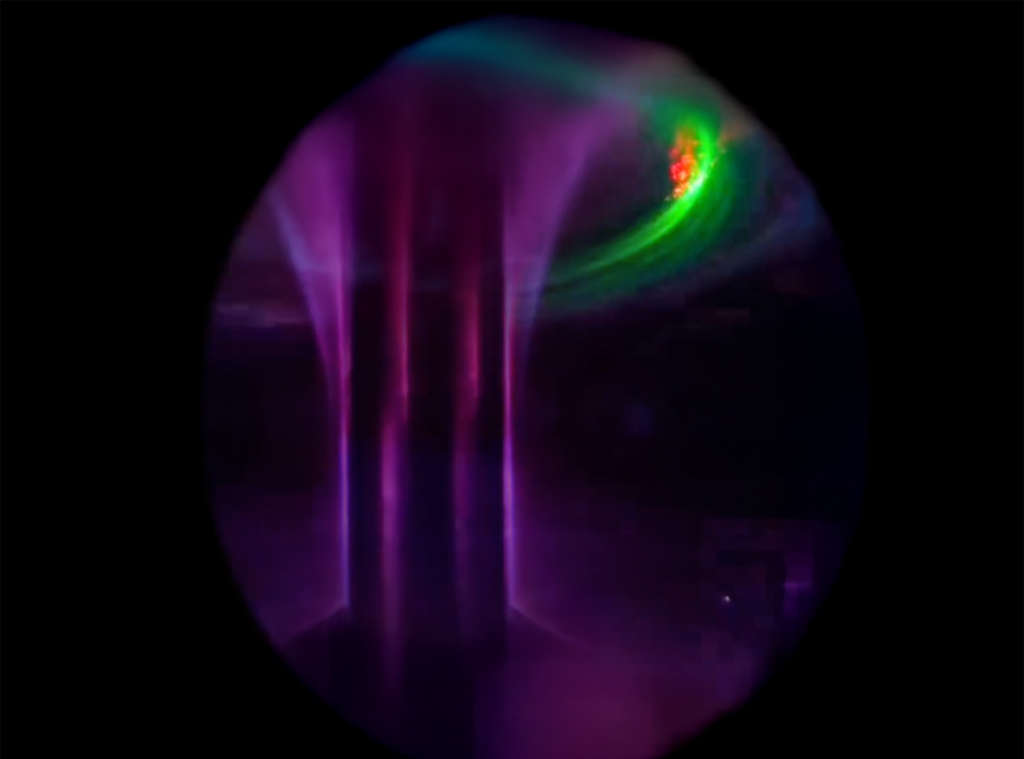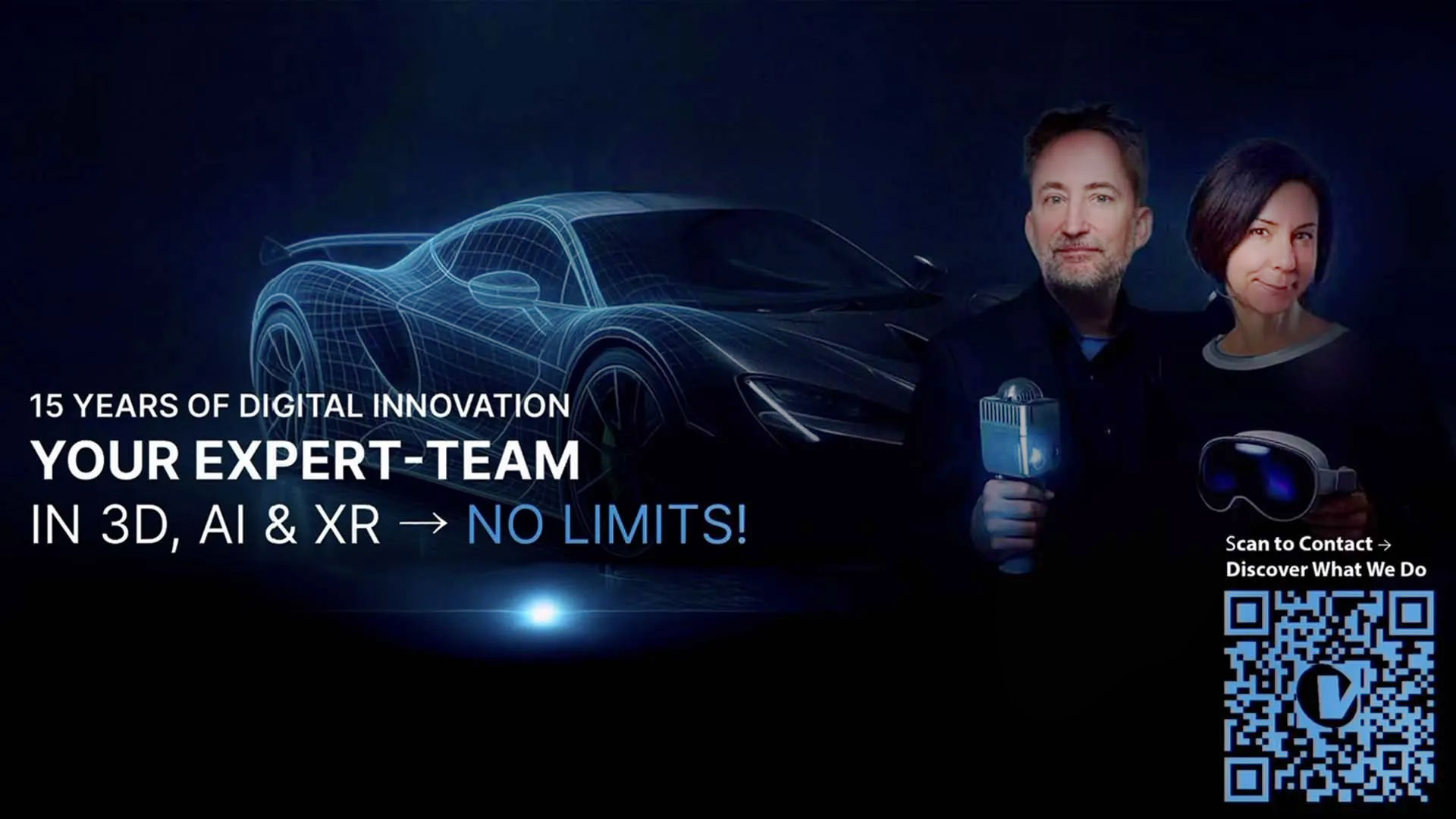Image: Original footage of fusion plasma inside Tokamak Energy’s ST-40 reactor – one of the first color film recordings at over one hundred million degrees Celsius | Source: Tokamak Energy 2025
At the heart of a fusion reactor, temperatures arise that are hotter than the core of the sun. Here, atomic nuclei merge into energy – a process that until now could only be described in models. Thanks to artificial intelligence, this physical phenomenon can now be observed for the first time.
Through learning systems and intelligent sensors, we can see how light, heat, and motion change within the reactor. AI detects patterns that human researchers could only speculate about before. This marks the emergence of an entirely new form of scientific observation – a film production that turns data into visible reality.
From Observation to Understanding
Artificial intelligence is fundamentally transforming fusion energy research. It can analyze millions of data points per second and interpret physical processes in real time. It’s not just about measurement but about true understanding – the machine learns to perceive energy as a living system.
- AI detects energy flows and patterns in fusion plasma
- Real-time data is transformed into visible imagery
- Machines learn to interpret physical processes
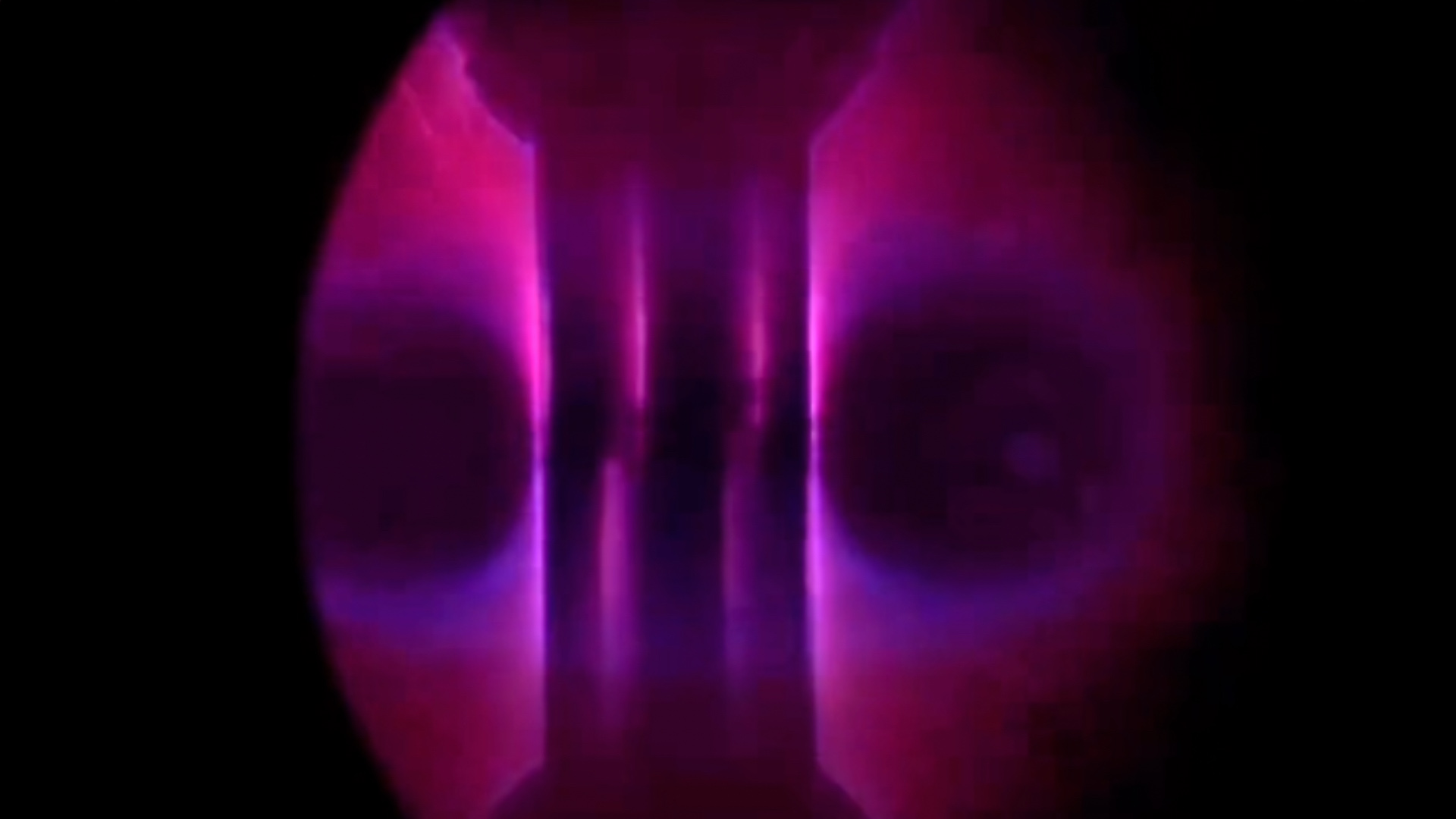
Image: Simulation of AI-assisted energy analysis inside Tokamak Energy’s ST-40 reactor at over one hundred million degrees Celsius | Source: Tokamak Energy 2025
The combination of science, visualization, and AI marks the beginning of a new research era. Where once only data existed, today we see images that reveal how energy truly behaves. This visual insight is the first step toward a deeper understanding of the energy system itself.
The Language of Plasma
Inside Tokamak Energy’s ST-40 fusion reactor, temperatures reach over one hundred million degrees Celsius. In this state, matter becomes plasma – a swirling sea of charged particles. This glowing substance is extremely unstable, changing within milliseconds, and nearly impossible to capture with conventional cameras. Artificial intelligence helps researchers understand the motion and structure of this energy.
AI systems analyze video data, light patterns, and magnetic fields simultaneously. They detect shapes, vortices, and transitions that indicate physical changes. This creates an image of plasma as a dynamic, living system that organizes itself. These insights bring science closer to harnessing the energy of the sun here on Earth.
- AI algorithms analyze the form and motion of plasma
- Detection of unstable phases and magnetic turbulence
- Linking video data, light intensity, and physical parameters
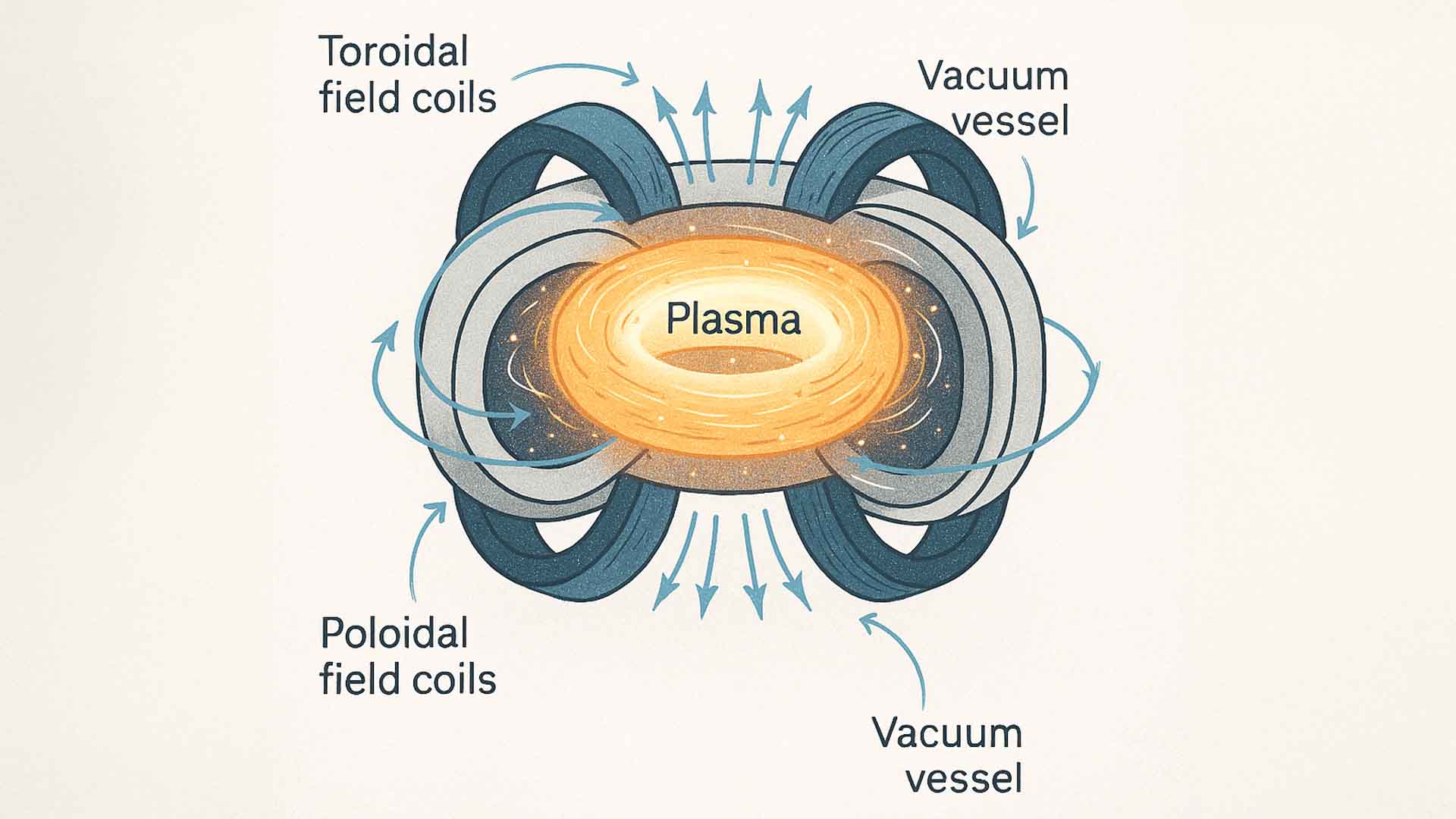
Image: Schematic representation of a Tokamak fusion reactor with toroidal and poloidal magnetic coils for plasma stabilization | Concept visualization: Ulrich Buckenlei / Visoric GmbH
This combination of real observation and artificial interpretation creates a new kind of scientific visualization. Where abstract measurements once dominated, we now see motion, color, and structure. This makes the fusion process not only measurable but also experiential.
When Machines Learn to See
Observing plasma requires not just precision but also understanding. AI systems take on tasks too complex for humans. They process countless data points from magnetic fields, spectral analyses, and thermal sensors. Every second, a new image of the reactor emerges – interpreted and reconstructed in real time.
This technology resembles machine vision used in autonomous vehicles or industrial manufacturing, yet the challenge here is far greater: it’s about controlling a form of energy that nature itself produces only in stars.
- Real-time analysis of light and temperature data
- Machine vision for precise analysis of magnetic patterns
- Use of neural networks to detect anomalies
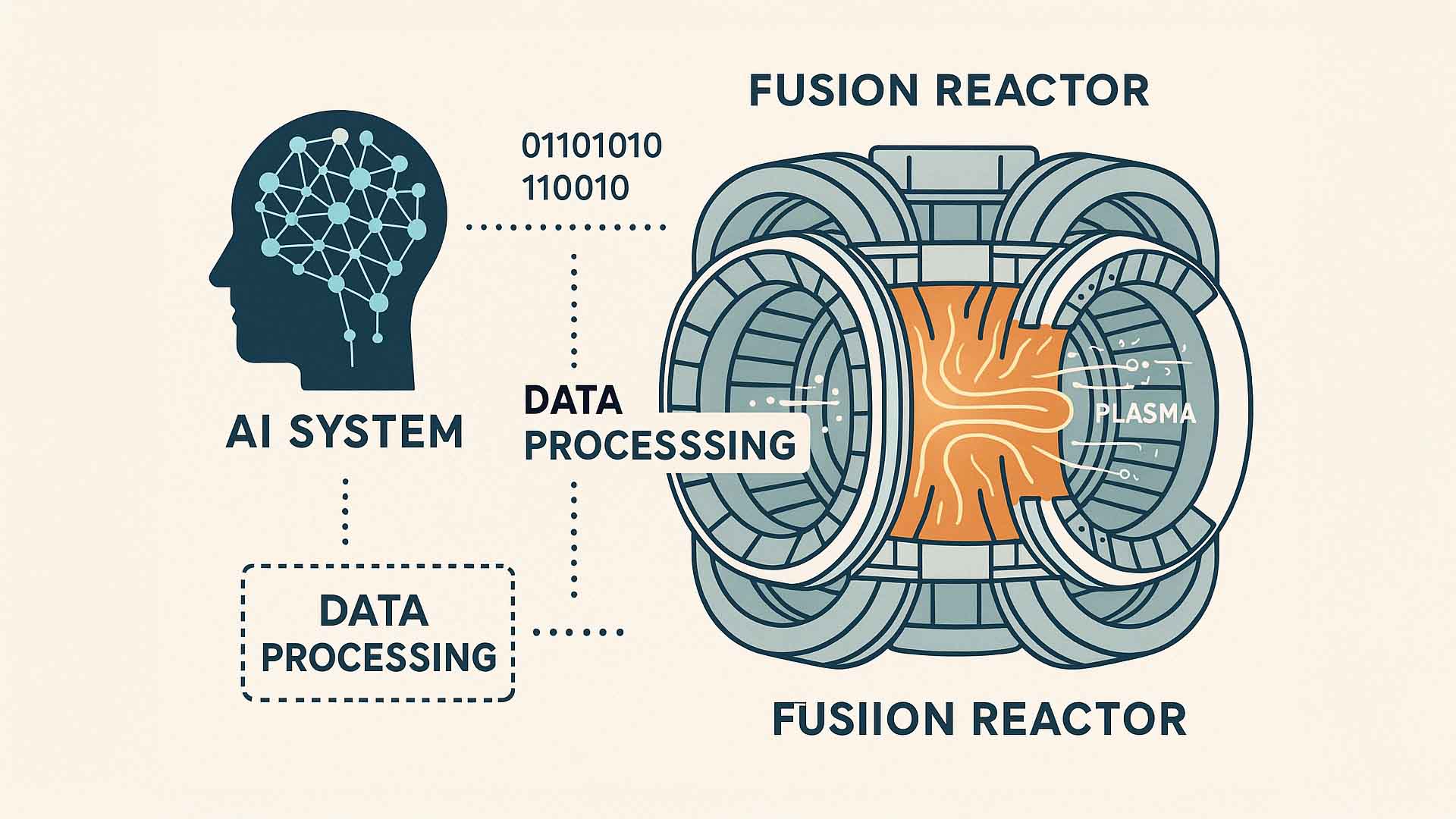
Image: Schematic depiction of data processing between an AI system and a fusion reactor – artificial intelligence analyzes and interprets plasma data in real time | Concept visualization: Ulrich Buckenlei / Visoric GmbH
The results of these analyses are not just stored but fed back instantly. The system learns from each frame, improving its predictive accuracy. Thus, a mere measuring device evolves into a learning instrument – a research partner that grows more precise with every second.
Data Flows in Fire
Every second, the ST-40 reactor produces vast amounts of measurement data: temperature, density, light intensity, magnetic field lines. These data hold the key to understanding plasma behavior. Yet without artificial intelligence, they would be nearly impossible to decode.
AI systems act as translators, merging image analysis, spectral data, and magnetic models into a unified view of the fusion process.
- Processing millions of data points per second
- Combining image, sensor, and magnetic field data
- Visualizing energy flows in real time
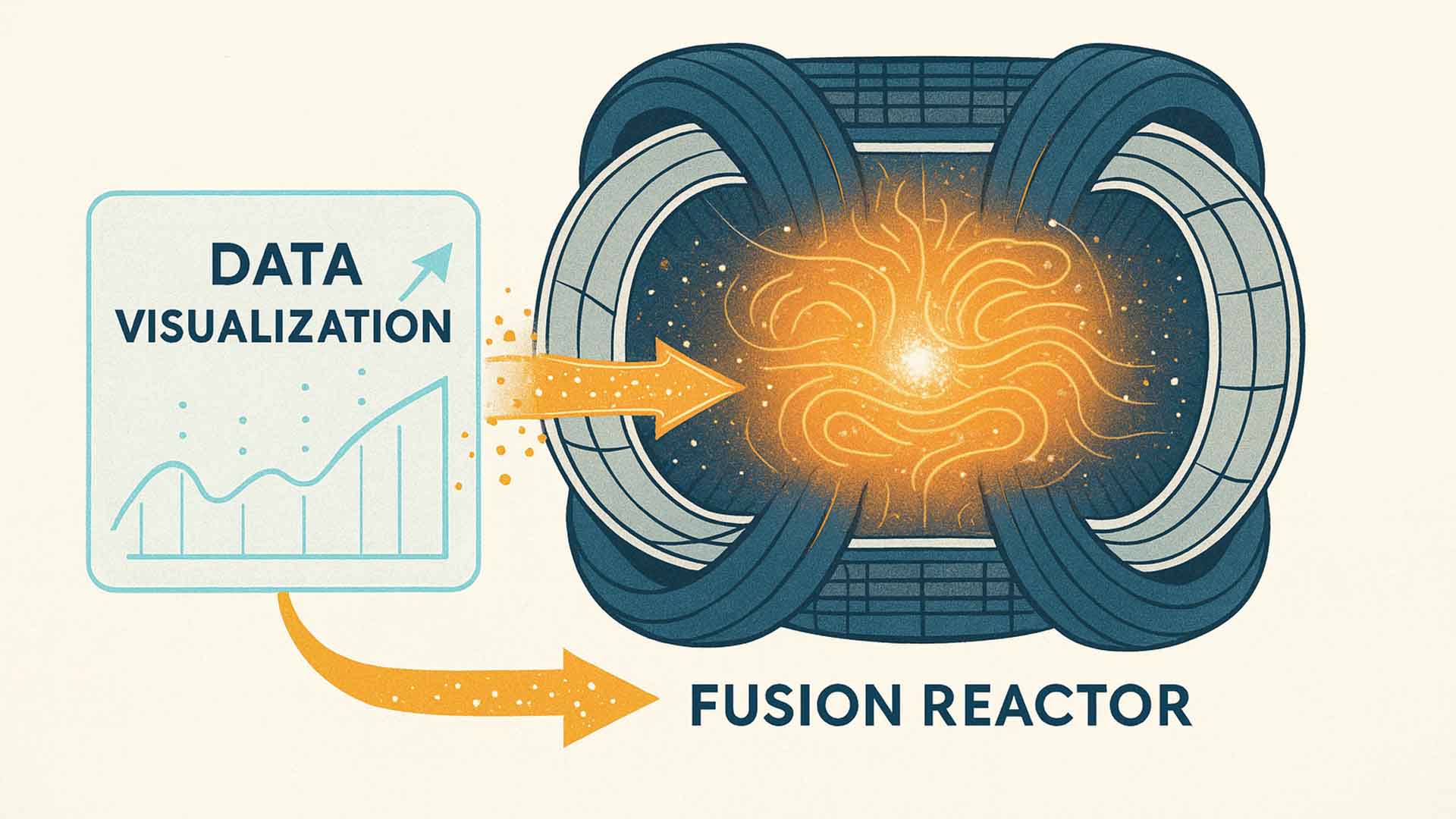
Image: Visualization of data streams inside a fusion reactor – AI-driven depiction of energy motion | Concept visualization: Ulrich Buckenlei / Visoric GmbH
This fusion of real-time data and machine learning turns research into a kind of live communication with matter itself.
The systems begin recognizing patterns that point to instability or energy loss – allowing them to react even before critical thresholds are reached.
From Observation to Control
The goal of research is not just to understand plasma but to actively control it. AI systems learn to adjust magnetic fields to keep the plasma stable.
This happens within milliseconds through a constant loop of observation, analysis, and adjustment. What was once pure reaction becomes a learning equilibrium between human, machine, and energy.
- Automatic real-time adjustment of magnetic field strength
- Prediction of unstable states using historical data
- Learning control algorithms for optimizing plasma flow
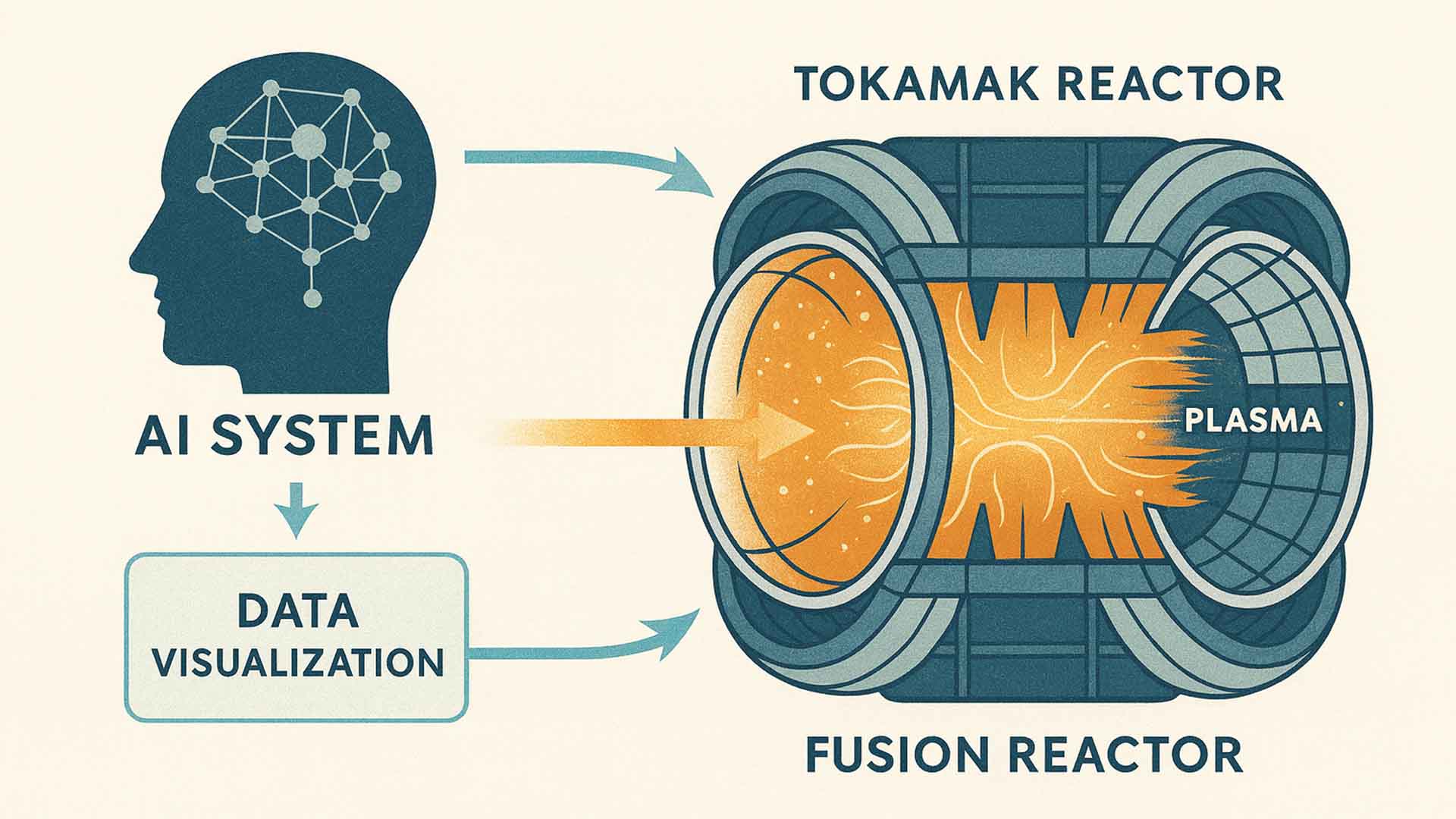
Image: Conceptual depiction of AI-based plasma regulation in a Tokamak reactor – a balance between observation and active control | Concept visualization: Ulrich Buckenlei / Visoric GmbH
An intelligent interplay between humans and technology emerges, moving beyond classical control.
The machine becomes a partner in research – not just a tool, but a co-thinker in the pursuit of future energy.
When Research Becomes Visible
The combination of real footage and AI-generated simulations opens a new dimension in science communication. Instead of abstract numbers and charts, we now see how energy truly moves. This creates understanding – not only among researchers but also within the public.
In Tokamak Energy’s ST-40 reactor, it was possible for the first time to analyze color film footage of fusion plasma exceeding one hundred million degrees Celsius with artificial intelligence. These visualizations show how technology and science merge to unlock new insights into the origins of energy.
Video: Color film footage of fusion plasma inside the ST-40 reactor – AI-assisted analysis and visualization of energy motion | Source: Tokamak Energy / Narration by Visoric GmbH
The cinematic perspective reveals what long remained hidden – the dance between magnetic fields, light, and energy. It makes tangible how close humanity has come to mastering fusion energy – and how crucial artificial intelligence is on that path.
Bringing Science to Life. With AI Film Technology, 3D, and Extended Reality.
Fusion energy research vividly illustrates how far the fusion of science, technology, and visualization has come. AI, real-time data, and immersive representation methods make the invisible visible and the complex understandable.
As Munich-based XR and 3D specialists, Visoric accompanies this transformation from a unique perspective – at the intersection of technology, communication, and perception. We translate data, systems, and processes into immersive visual worlds – physical, virtual, and hybrid.
- Creation of immersive visualizations using AI, 3D, and spatial computing
- Integration of real-time data and sensors into interactive XR experiences
- Development of scalable visualization solutions for research, industry, and media
Image: Over 15 years of digital innovation – the Munich expert team for 3D, AI, and XR, where innovation knows no limits. | Visualization: Visoric GmbH 2025
Source: Visoric Development Lab | Photo & Text: Ulrich Buckenlei
In practice, it becomes clear that the quality of an immersive system is defined by detail. Every camera angle, every light source, and every millisecond synchronization affects the experience. Only when technical engineering and aesthetic design speak the same language does what Visoric calls “perceptual continuity” emerge – the seamless interplay between real perception and digital intelligence.
Such projects demand interdisciplinary thinking. Designers, developers, and engineers collaborate on systems that view perception as a data source. This gives rise to new standards for architecture, education, industry, and entertainment – systems that are not merely controlled but experienced. Visoric supports this transformation as a partner for companies shaping the next step of digital evolution.
Collaborate with Leading Minds in AI and XR Innovation
Would you like to explore the potential of Perceptive AI, real-time 3D, or immersive systems for your business? Talk to the Munich-based VISORIC expert team. Together we develop projects that connect technology, design, and emotion – creating spaces that think, react, and inspire.
- Consulting, strategy development, and prototypical implementation
- Integration of AI, XR, and real-time data into your environment
- Long-term support, scaling, and technical evolution
Now is the right time to see perception as the new interface between humans and machines.
We look forward to your ideas and to shaping the next stage of digital interaction together.
“`
Contact Us:
Email: info@xrstager.com
Phone: +49 89 21552678
Contact Persons:
Ulrich Buckenlei (Creative Director)
Mobil +49 152 53532871
Mail: ulrich.buckenlei@xrstager.com
Nataliya Daniltseva (Projekt Manager)
Mobil + 49 176 72805705
Mail: nataliya.daniltseva@xrstager.com
Address:
VISORIC GmbH
Bayerstraße 13
D-80335 Munich


